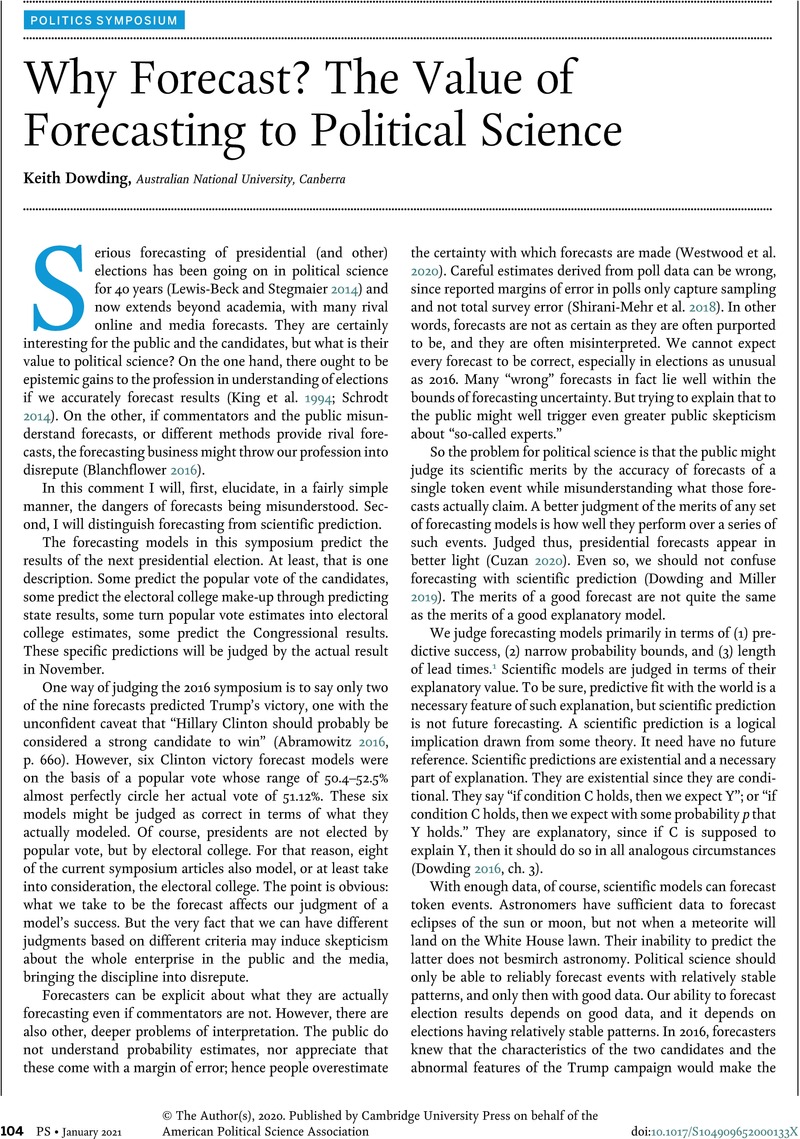Crossref Citations
This article has been cited by the following publications. This list is generated based on data provided by Crossref.
Dowding, Keith
2021.
Individually lucky, collectively powerful: a response to friends.
Journal of Political Power,
Vol. 14,
Issue. 2,
p.
340.
Leiter, Debra
2023.
Teaching Forecasting Without Teaching Methods.
Journal of Political Science Education,
Vol. 19,
Issue. 2,
p.
185.
Boasson, Elin Lerum
and
Tatham, Michaël
2023.
Climate policy: from complexity to consensus?.
Journal of European Public Policy,
Vol. 30,
Issue. 3,
p.
401.





